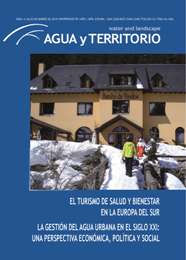¿Un enemigo del pueblo?: medicina, industria y turismo en España (siglos XIX-XX)
DOI:
https://doi.org/10.17561/at.v0i6.2808Palabras clave:
balnearios, aguas mineromedicinales, hidrología médica, médicos de baños, publicidad, turismoResumen
En 1817, la creación del Cuerpo de Médicos Directores de Baños se justificó por la necesidad de conocer el remedio hidromineral y garantizar una correcta administración del mismo. Esta medida concedía a este nuevo colectivo de expertos poder elegir el lugar en que querían desempeñar su función. La medicalización de los baños y la subsiguiente creación del balneario supusieron que los médicos directores tuviesen un relevante papel en el funcionamiento de esta nueva industria, a menudo contrario a los intereses económicos de los propietarios, aunque en algunos puntos coincidentes. Los análisis químicos de las aguas fueron una de sus actividades desarrolladas, a las que se unirían las del estudio del medio para constituir topografías médicas balnearias, una literatura científica que acabaría por avalar que la curación se vinculaba a condiciones ambientales que trascendían el propio valor del agua. A medio camino entre las funciones de propaganda y control, entre la medicalización y el turismo, estos dos colectivos protagonizaron una permanente contienda que fue conocida como “la libertad balnearia” y hubo de saldarse con la supresión del cuerpo en 1932 y su sustitución, tras la Guerra Civil, por un cuerpo de inspectores de establecimientos balnearios.
Descargas
Descargas
Publicado
Número
Sección
Licencia
© Universidad de Jaén
Los originales publicados en las ediciones impresa y electrónica de esta Revista son propiedad de la Universidad de Jaén siendo necesario citar la procedencia en cualquier reproducción parcial o total.
Salvo indicación contraria, todos los contenidos de la edición electrónica se distribuyen bajo una licencia de uso y distribución “Creative Commons Reconocimiento 4.0 España” (CC-by). Puede consultar desde aquí la versión informativa y el texto legal de la licencia. Esta circunstancia ha de hacerse constar expresamente de esta forma cuando sea necesario.














